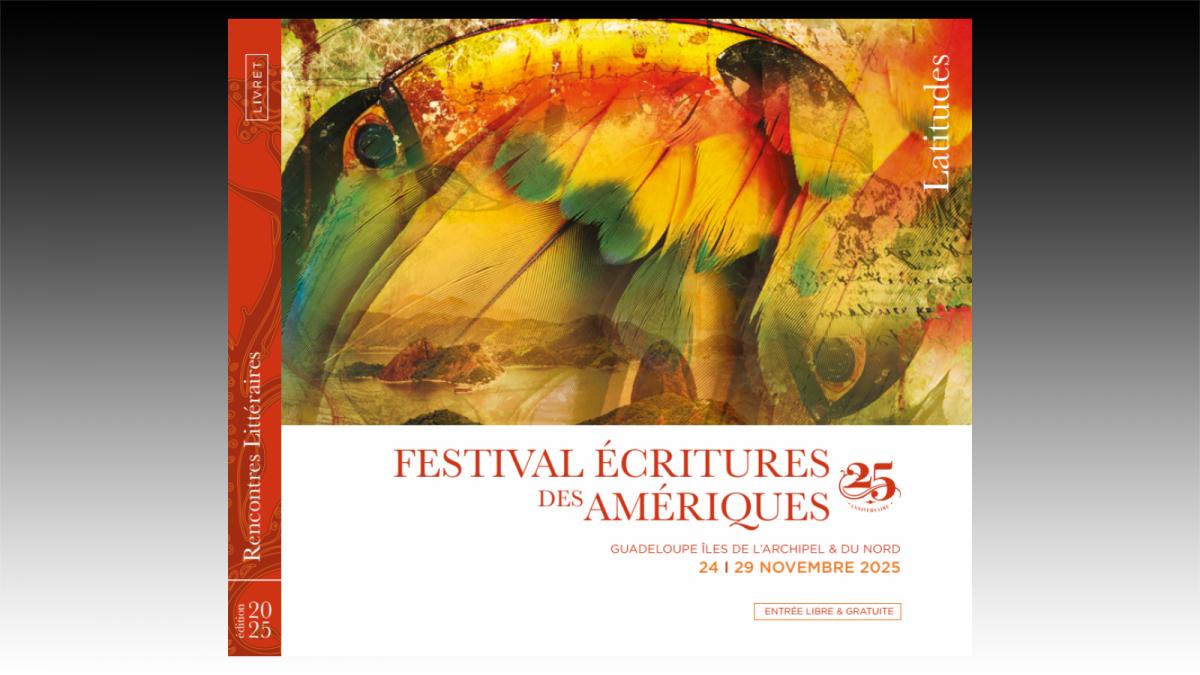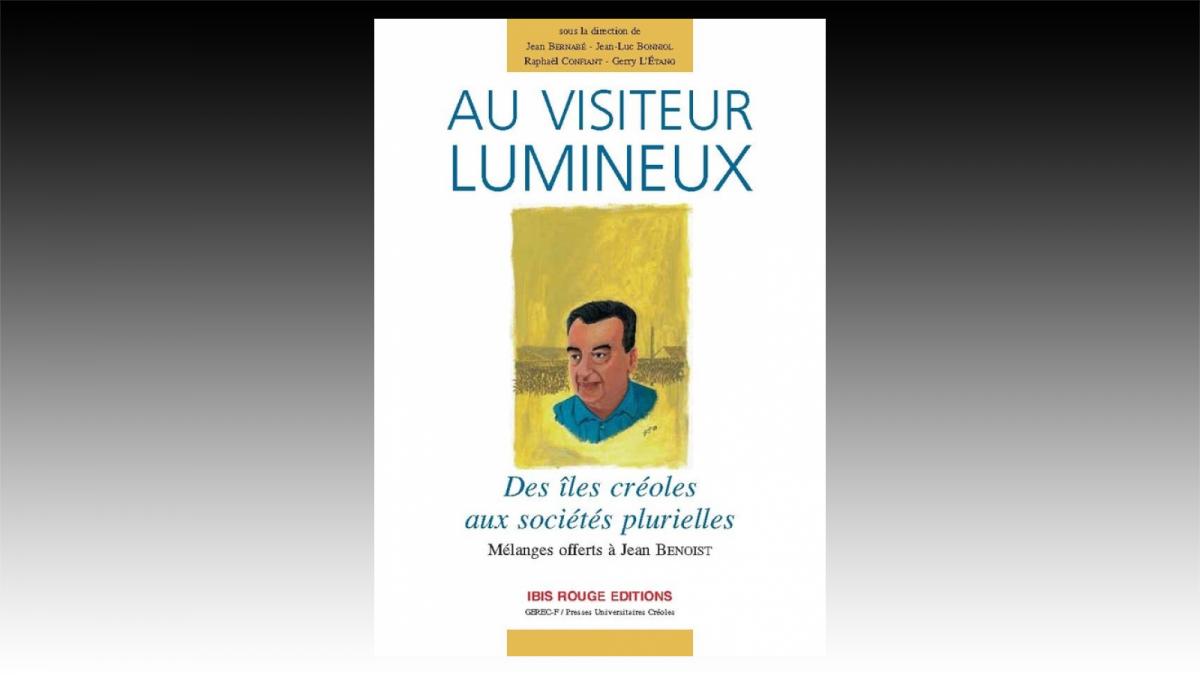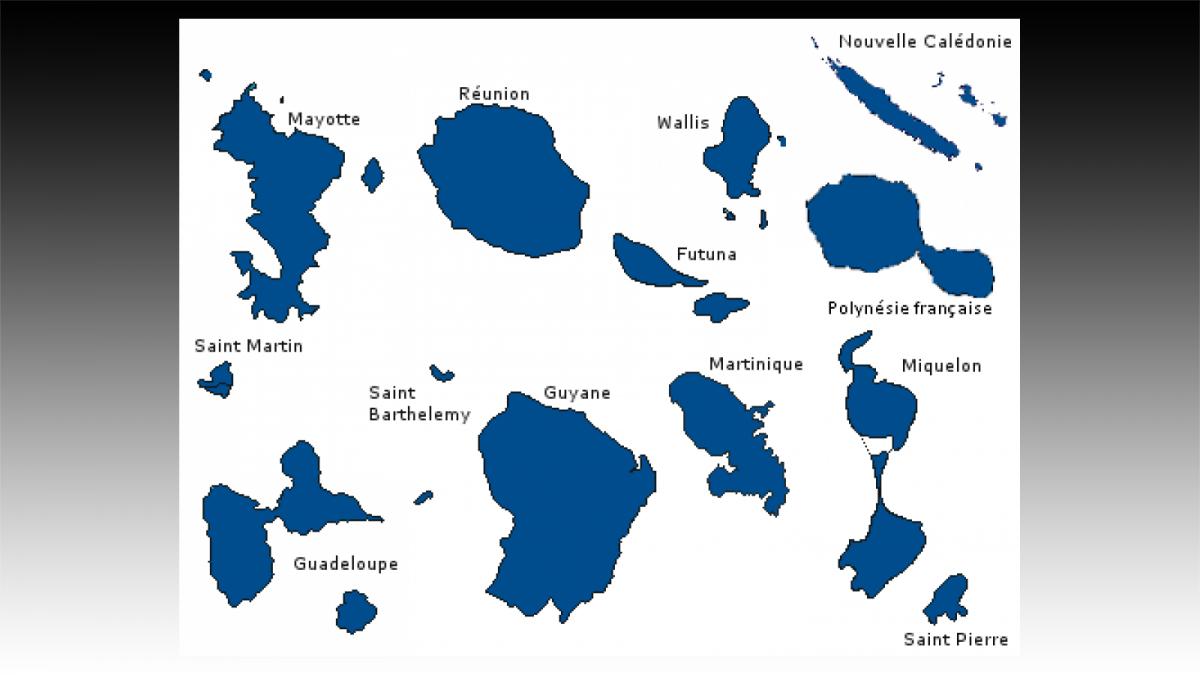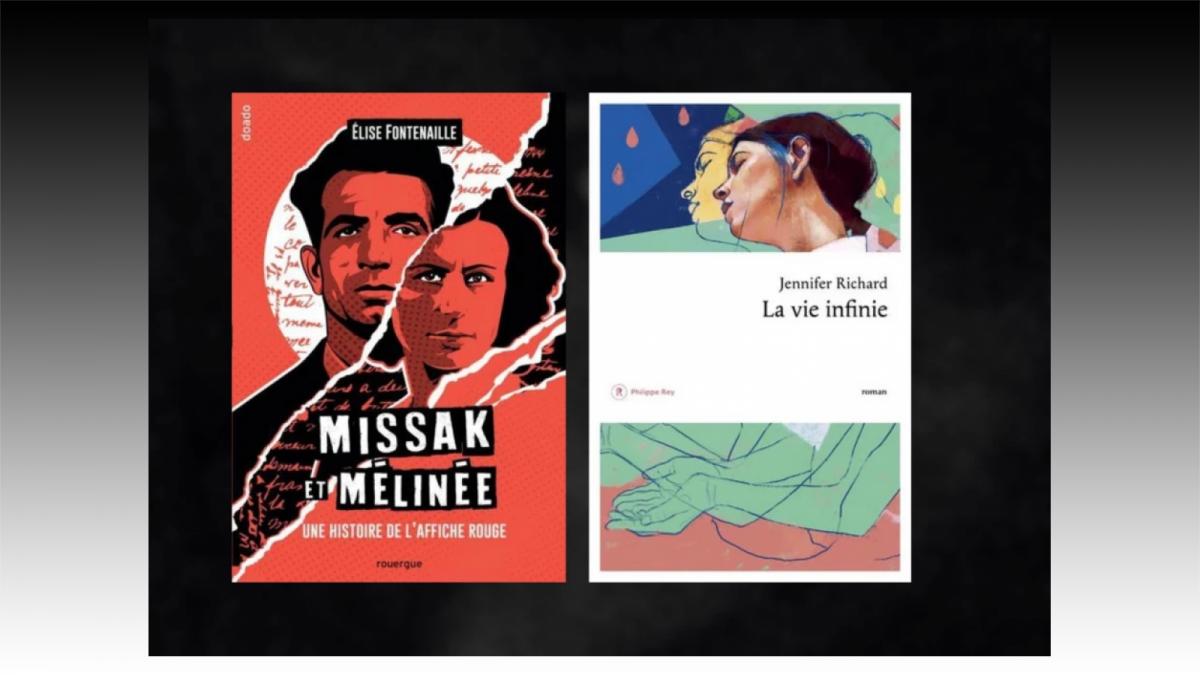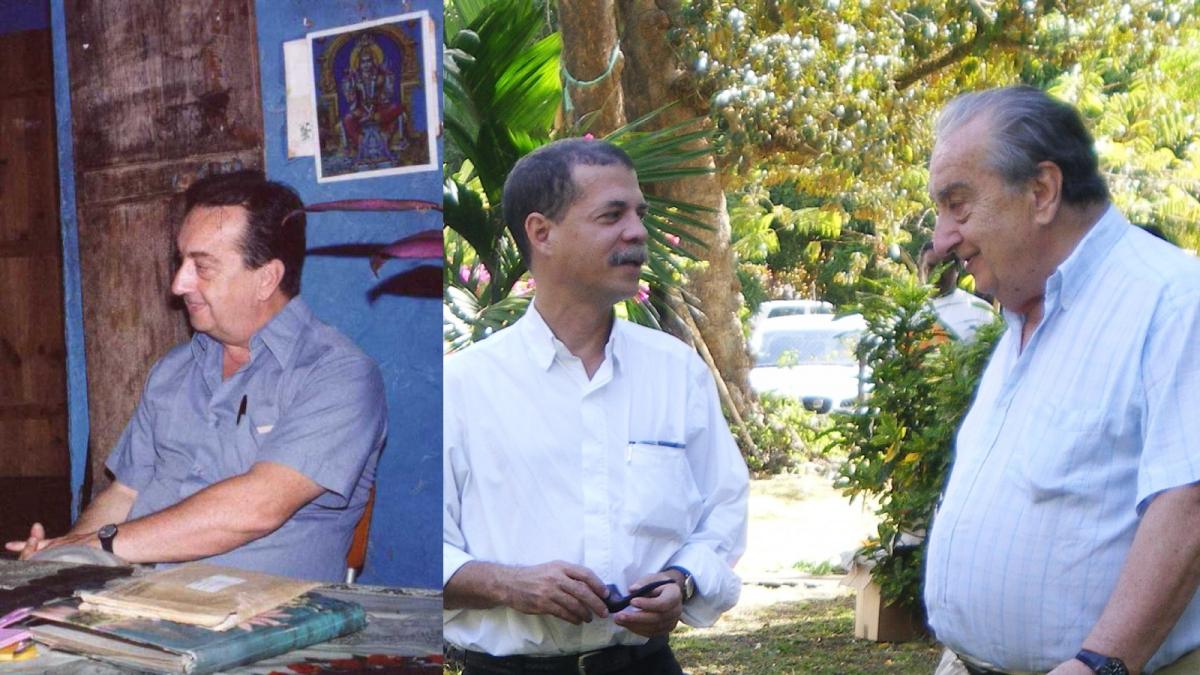Master's degree program focuses on revitalizing Native American languages
Lori Harwood ("Tne University of Arizona")
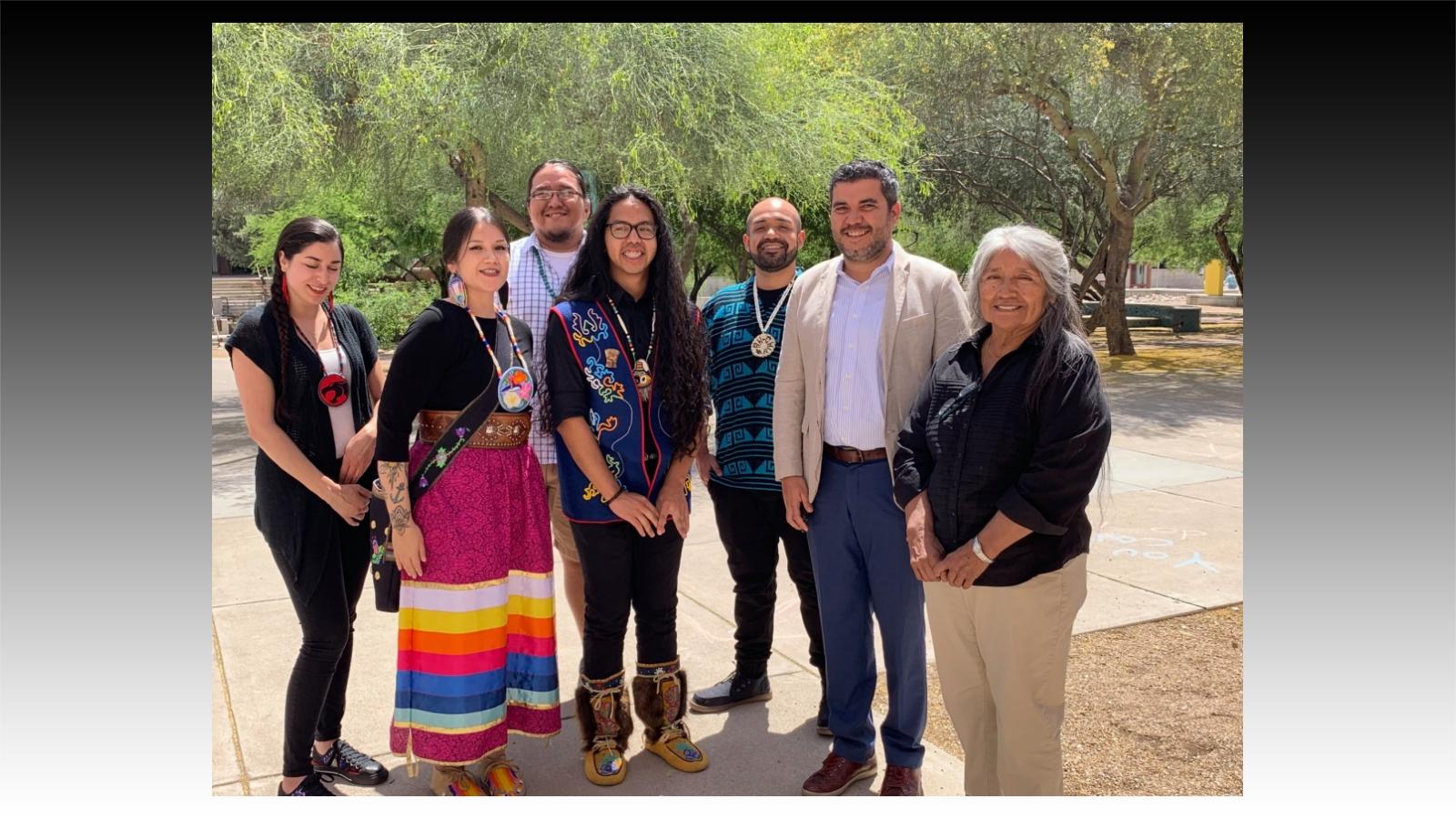
The Department of Linguistics' Native American Languages and Linguistics master's degree program, known as NAMA, aims to broaden the participation of Native American students in language sciences and graduate school.
Kickapoo was the first language of Mosiah Bluecloud, an enrolled member of the Kickapoo Tribe of Oklahoma. With a focus on revitalizing the Shawnee and Kickapoo languages, Bluecloud says he "eats, breathes and prays" in his Native American language.
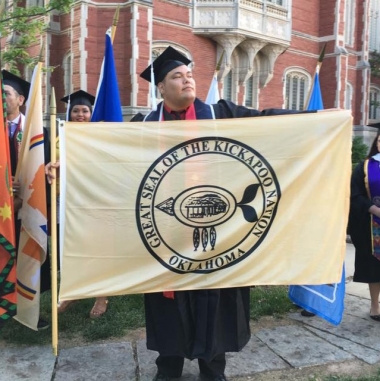
Mosiah Bluecloud
Bluecloud received his master's degree in Native American languages and linguistics from the University of Arizona in 2020 and is now pursuing a doctorate in linguistics at the university.
"I believe that language is the glue that holds communities together by connecting past, present and future culture caretakers. Language provides access to identity and ways of being," Bluecloud said. "My hope is to create lasting pathways to one's heritage languages."
Bluecloud credits the university's Native American Languages and Linguistics master's degree program, also known as NAMA, with helping him find his voice in academia.
"I recommend the NAMA program to all the language workers I come across," he said
The degree program, housed in the Department of Linguistics in the College of Social and Behavioral Sciences, trains students in linguistics, language documentation, and language revitalization. It also aims to broaden the participation of Native American students in language sciences and graduate school.
Regents Professor of Linguistics Ofelia Zepeda, who co-founded NAMA, said the program advances the objectives of the UNESCO International Decade of Indigenous Languages, or IDIL, which begins this year. The United Nations General Assembly proclaimed the period between 2022 and 2032 as the International Decade of Indigenous Languages to draw global attention to indigenous languages and the need for their preservation.
"IDIL has a number of thematic areas that Indigenous language communities can focus on during the decade. One of them is access," said Zepeda, who represents the United States on UNESCO's IDIL task force. "Training Indigenous people in the field of linguistics is one of the best ways to enable access to research and early documentation of their language."
Documenting and revitalizing Native American languages
Founded in 1999, NAMA was innovative for its time, Zepeda said.
"Its immediate goal was to provide basic linguistic training to speakers of Indigenous languages so that these individuals could return to their communities and build on the different types of language work that either they or their language programs or their tribes were engaged in," she said.
The program is bolstered by a strong UArizona linguistics Ph.D. program and collaboration with the university's American Indian Language Development Institute, which is housed in the College of Education and directed by Zepeda.
The type of students who apply and are accepted into the NAMA program has expanded over the years, said Wilson de Lima Silva, director of NAMA and assistant professor in the Department of Linguistics.
"Originally, students were often fluent in their Native languages," de Lima Silva said. "In the last decade, however, NAMA has been serving Native students who may not be fluent in their language, but they come into the program as part of their goal to learn and reclaim their Native languages and often to pursue a doctorate in linguistics."

Rosalia Badhorse
NAMA student Rosalia Badhorse, from the Northern Cheyenne Tribe of Montana, grew up casually hearing her heritage language but wasn't explicitly taught it because of the complex political, economic and sociocultural pressures to speak English in the U.S., she said. She received a bachelor's degree in business administration, but then her grandfather, a Cheyenne speaker, passed away.
"That's when it really hit me that I needed to do more with my language and culture," she said.
Badhorse is studying Cheyenne language for second language learners and plans to work on language revitalization in her community once she graduates.
"Endangered languages are a real issue for Native American communities, and attempting to tackle this from linguistics can be such a daunting task. Stressful days are common," Badhorse said. "But it's great to have such an amazing support system and sense of community with NAMA. Cheyenne language grammar can appear complicated, but I'm finally starting to understand more of my language, and I'm just so excited to share this with others."
The NAMA program is also accepting students from Indigenous language communities in Central and South America as well as non-Native students who have been involved in Indigenous language revitalization work.
"Admitting students from these various groups allows us to provide training in language revitalization to far more people who can then apply this knowledge around the world to help improve the health of Indigenous languages," de Lima Silva said.
The program has also been adapting its curriculum to serve students interested in computational approaches to language revitalization and documentation, with some students taking courses in the department's Human Language Technology program.

Zion Smith
NAMA student Zion Smith is a Chickasaw Nation citizen working on Chickasaw language revitalization and Native American language typology.
"Native American languages can benefit greatly from advancements in computational linguistics," Smith said. "A major bottleneck for many languages is the incredibly time-consuming process of segmentation and transcription. For example, our tribe has a large number of recordings waiting for manual analysis. If this process can be automated to some degree, which is something we are working on, it would save a lot of time."
Increasing Native American representation in graduate school
The NAMA program often serves as a stepping stone for Indigenous students who wish to advance to Ph.D. programs in linguistics or other disciplines, de Lima Silva said.
According to the 2020 National Science Foundation Survey of Earned Doctorates, of the 55,283 U.S. students awarded doctoral degrees in 2020, 97 were American Indian/Alaska Native. And of the 232 doctoral degree recipients in linguistics, only one was American Indian/Alaska Native.
The national Natives4Linguistics Project notes that given the increasingly large focus on Native American languages in the field of linguistics, the underrepresentation of Native Americans in the field is of special concern.

Jeremy Johns
Over the past 23 years, the NAMA program has graduated 30 students, and 18 went on to pursue doctoral degrees in various disciplines, including linguistics, education, anthropology and child development. All but three NAMA graduates have been members of Indigenous communities. The program admits about three or four students each year.
"When I attend national conferences, I'm often surprised that people know that NAMA is one of the leading programs helping to bring more Native American scholars into the field of linguistics," de Lima Silva said.
Jeremy Johns, who grew up on the Ak-Chin Indian Community in Southern Arizona, received his NAMA degree in 2019 and is now a Ph.D. linguistics student at Yale University.
"There's a common assumption that culture and language are somehow separable. For us as O'odham, they exist within each other," Johns said. "I'm very interested in coupling the fields of academic linguistic research and community-based language revitalization efforts to ensure the survival of this endangered language."
- Se connecter ou s'inscrire pour publier un commentaire
- 119 vues
Connexion utilisateur
Dans la même rubrique
26/11/2025 - 17:28
Jean Bernabé, Jean-Luc Bonniol, Raphaël Confiant, Gerry L’Etang
24/11/2025 - 10:45
15/11/2025 - 21:52
Clotilde Matin ("Les Univers du Livre-Actualité")
15/11/2025 - 09:16
Commentaires récents
Serge Letchimy confronté à la justice pour son départ en retraite
Je ne sais pas ,mais ....
poi
26/11/2025 - 22:16
...je ne suis ni juriste ni spécialiste des finances municipales ,mais le montage (c'est bien l Lire la suite
70 footballeurs de renom appellent à exclure la Fédération Israélienne de Football
Bravo à eux !!!!
poi
24/11/2025 - 20:08
C'est la moindre des choses !!!Qu'on ne vienne pas nous bassiner avec l'argument éculé selon lequ Lire la suite
Kréyolad 1102: Lajistis an manniman
An grèv
abcx
23/11/2025 - 19:56
Mwen pa sav, mé sé bon réfleksyon. Ou sé di ki F k an grèv sé jou tala. Lire la suite
Nouvelle-Zélande. La culture maorie boutée hors de l’école
COMME LE HAKA......
poi
21/11/2025 - 10:09
Ce célébrissime chant de guerre maori est enseigné (j'espère que c'est encore le cas ) depuis qq Lire la suite
Serge Letchimy confronté à la justice pour son départ en retraite
RETABLISSEMENT
abcx
20/11/2025 - 22:34
"Confronté à la justice pour son départ en retraite". Lire la suite
Top 5 des articles
Aujourd'hui :
- Serge Letchimy confronté à la justice pour son départ en retraite
- Festival Écritures des Amériques - 25ème anniversaire
- Serge Restog célèbre le Noël créole
- Dirty food: racism and casteism in India
- Le site "Montray Kréyol" a 17 ans
Depuis toujours :
- Tous les présidents et premiers ministres de la Caraïbe sont vaccinés
- L'intolérable appauvrissement intellectuel et culturel de la Guadeloupe et dans une moindre mesure de la Martinique !
- LETTRE OUVERTE AU 31ème PREFET FRANCAIS DE MARTINIQUE
- L'arrière-grand-père maternel de Joan Bardella était...algérien
- Les triplement vaccinés contre le covid ne bandent plus

